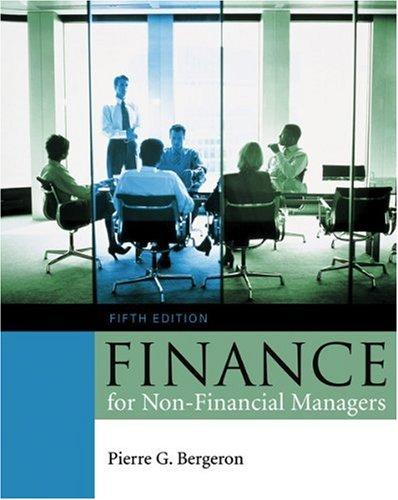Answered step by step
Verified Expert Solution
Question
1 Approved Answer
A company is considering two mutually exclusive expansion plans. Plan A requires a $ 4 0 million expenditure on a large - scale integrated plant
A company is considering two mutually exclusive expansion plans. Plan A requires a $ million expenditure on a largescale integrated plant that would provide expected cash flows of $ million per year for years. Plan B requires a $ million expenditure to build a somewhat less efficient, more laborintensive plant with an expected cash flow of $ million per year for years. The firm's WACC is The data has been collected in the Microsoft Excel Online file below. Open the spreadsheet and perform the required analysis to answer the questions below.A company is considering two mutually exclusive expansion plans. Plan A requires a $ million expenditure on a largescale integrated plant
that would provide expected cash flows of $ million per year for years. Plan B requires a $ million expenditure to build a somewhat
less efficient, more laborintensive plant with an expected cash flow of $ million per year for years. The firm's WACC is The data
has been collected in the Microsoft Excel Online file below. Open the spreadsheet and perform the required analysis to answer the questions
below.
Open spreadsheet
a Calculate each project's NPV Round your answers to two decimal places. Do not round your intermediate calculations. Enter your
answers in millions. For example, an answer of $ should be entered as
Plan A: $ million
Plan B: $ million
Calculate each project's IRR. Round your answer to two decimal places.
Plan A:
Plan B:
b By graphing the NPV profiles for Plan A and Plan B approximate the crossover rate to the nearest percent.
c Calculate the crossover rate where the two projects' NPVs are equal. Round your answer to two decimal places.
d Why is NPV better than IRR for making capital budgeting decisions that add to shareholder value? The input in the box below will not be
graded, but may be reviewed and considered by your instructor.
Open spreadsheet
Calculate each project's NPV Round your answers to two decimal places. Do not round your intermediate calculations. Enter your answers in millions. For example, an answer of $ should be entered as
Plan A: $ fill in the blank million
Plan B: $ fill in the blank million
Calculate each project's IRR. Round your answer to two decimal places.
Plan A: fill in the blank
Plan B: fill in the blank
By graphing the NPV profiles for Plan A and Plan B approximate the crossover rate to the nearest percent.
fill in the blank
Calculate the crossover rate where the two projects' NPVs are equal. Round your answer to two decimal places.
fill in the blank
Why is NPV better than IRR for making capital budgeting decisions that add to shareholder value? The input in the box below will not be graded, but may be reviewed and considered by your instructor.

Step by Step Solution
There are 3 Steps involved in it
Step: 1

Get Instant Access to Expert-Tailored Solutions
See step-by-step solutions with expert insights and AI powered tools for academic success
Step: 2

Step: 3

Ace Your Homework with AI
Get the answers you need in no time with our AI-driven, step-by-step assistance
Get Started


